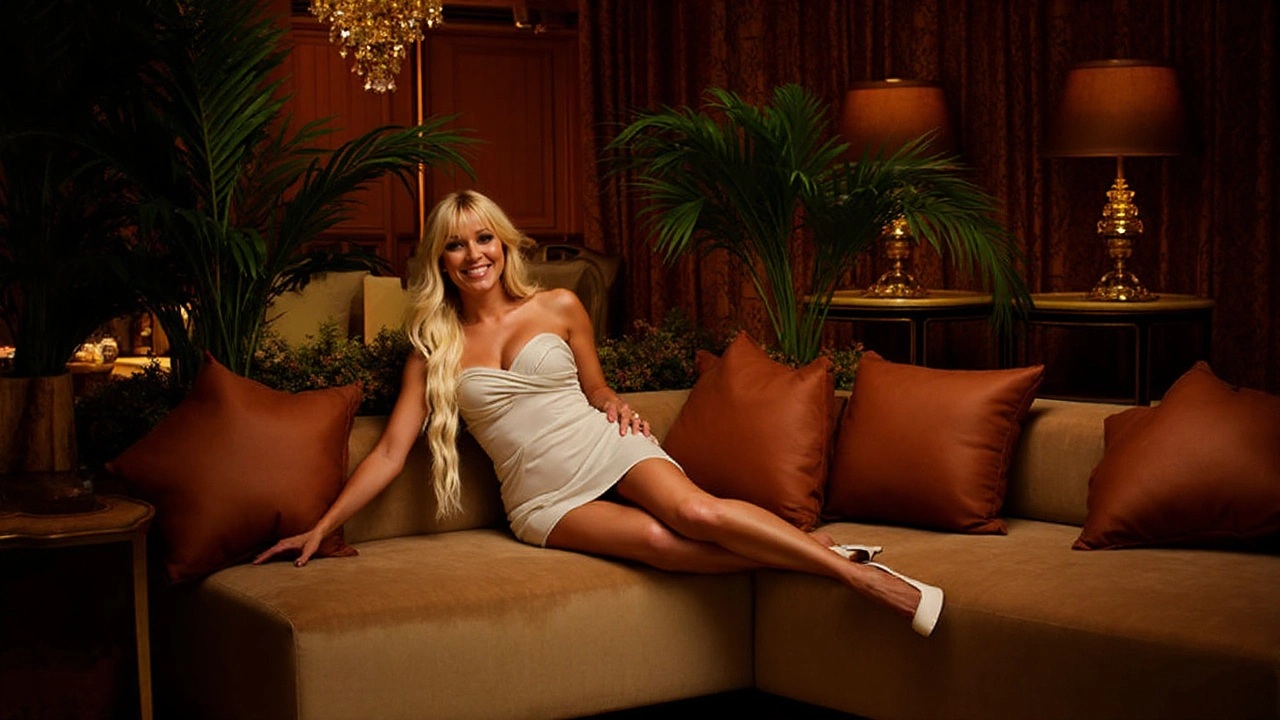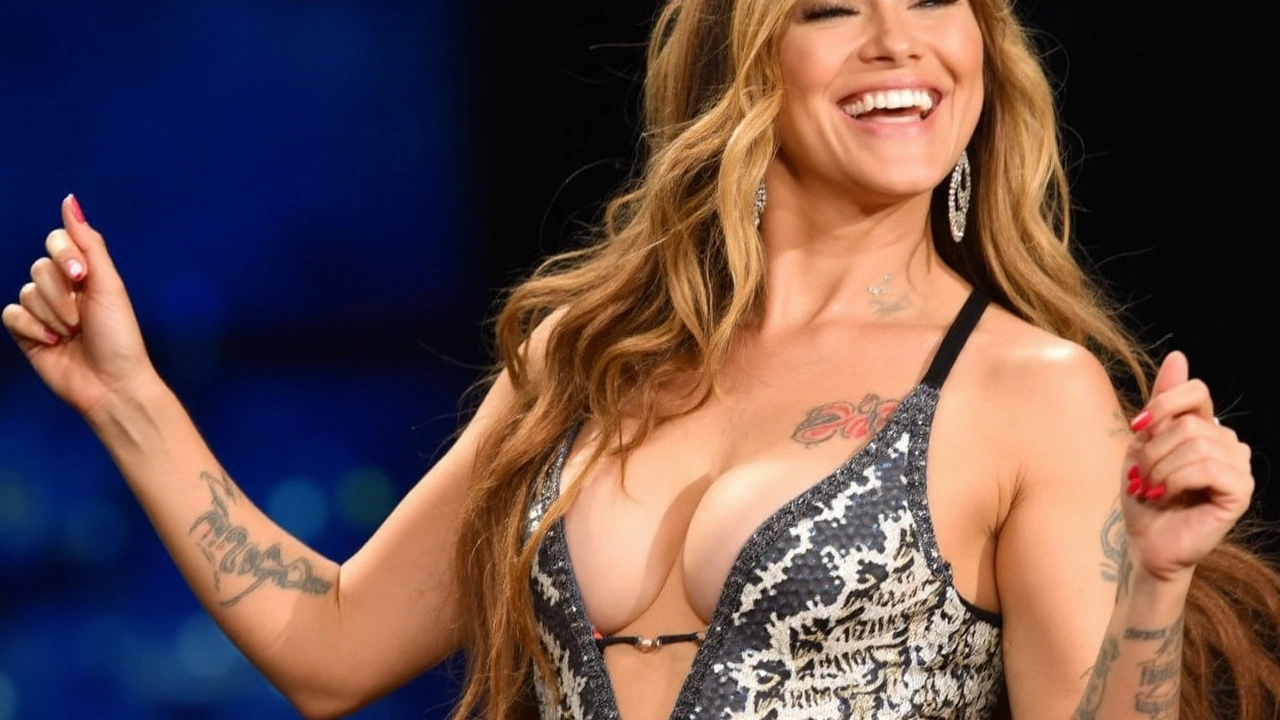Two covers, one message: Karol G owns the moment
Two covers. One star. ELLE Spain’s August 2025 issue puts Karol G front and center, and the photos make a simple case: she’s not just a music force, she’s a fashion one. Shot by Txema Yeste and styled by Alba Melendo, the dual covers lean hard into 1970s glam with a sci‑fi wink—think Barbarella energy, big hair, bold curves, and the kind of confidence you can’t fake.
The first cover taps vintage Marni, a smart move that grounds the whole story in craft and history. The second mixes Gimaguas with Roberto Cavalli, giving that sultry, night‑out polish Cavalli is known for, but filtered through Yeste’s cinematic eye. One version runs in black and white, and it lands with quiet power: clean lines, deep shadows, and a timeless feel that lets her expression do the work.
So why two covers? Because they tell two sides of the same person. Karol can swing from retro bombshell to modern edge without losing the throughline. The styling builds that contrast on purpose—soft textures versus sharp silhouettes, volume versus restraint, shine versus matte. You can feel the play between past and present in every frame.
Yeste, a Spanish photographer known for sculptural light and saturated color, doesn’t flatten her into a costume. He gives her room. The hair has lift. The makeup keeps the focus on eyes and shape. Melendo’s choices don’t over‑complicate things. They honor the references without turning the shoot into dress‑up. It’s aspirational, but it’s still her.
Creative director Benedetta Poletti has been steering ELLE Spain through a strong run—Valentina Sampaio, Philippine Leroy‑Beaulieu, Karlie Kloss, Arizona Muse, Jessica Chastain, Elle Macpherson. Those covers each delivered a clear idea. Karol’s addition fits that streak, and it adds something different: Latin pop’s top stadium draw wearing the fashion crown with zero hesitation.
Inside, the magazine gives her 13 pages. That’s a real commitment in print terms. The edit traces her style path from athletic streetwear and stage‑ready bodysuits to tailored dresses and vintage‑leaning looks. It’s less about swapping identities and more about scale. On stage, she plays big—color, movement, armor. In editorial, she narrows the shot and lets attitude do the heavy lifting.
If you follow her career, the timing makes sense. She won a Grammy, sold out stadiums, and became the first woman to top the U.S. albums chart with a Spanish‑language release. All of that pulled her into fashion’s orbit. Big houses want cultural heat, and right now, few artists carry more of it. These covers flow from that crossover, not the other way around.
The 70s references aren’t random. That era’s “bombshell” formula—height, hair, hips, and high drama—reads differently today. It’s less male gaze, more self‑command. The black‑and‑white cover drives that point home. When you strip out color, the posture matters. Her shoulders square up. Her chin sets. It’s a portrait of control, not decoration.
There’s also a Spanish fashion angle here. ELLE Spain has a habit of pairing homegrown visual talent with international stars. Yeste’s work has that Mediterranean intensity—sun‑carved shadows, tactile fabrics, and a taste for tension. Karol’s presence meets that intensity head‑on, and the result feels specific to the Spanish market while still global‑ready.
Melendo builds the wardrobe like a conversation. Vintage Marni carries a story of clever proportions and odd‑beautiful color. Gimaguas brings youthful ease. Cavalli brings bite and body. Together, they frame her as a woman who can jump lanes without losing the heat that made her famous. That range is what fashion editors want: someone who can turn on a dime and still look like herself.
Public reaction backed the bet. Fans loved the hair and the attitude. Fashion watchers pointed to the Yeste lighting and how the 70s cues felt polished, not camp. The black‑and‑white cover drew praise for its restraint. If the job was to cut through a crowded August newsstand with something sleek and memorable, it did the job.
The issue doesn’t stop with her. Lucia Ponti gets a 10‑page spread shot by Dario Aranyo—a name Spanish readers know for clean, architectural images. The pacing of the magazine matters: you start with Karol’s maximal mood, then move to a cooler, more minimal rhythm. There’s also a reprint of Lindsay Lohan’s recent U.S. ELLE cover story, a reminder that the brand plays across markets and moments, and likes to keep its biggest names in circulation.
Dual covers are also a strategy. They encourage collecting, they test which image resonates, and they let a magazine flex two visual ideas without overstuffing one frame. Here, the split sells a theme: old‑school bombshell energy versus modern club‑ready seduction. Both are glam. Both are deliberate. Together, they track with where the culture is—nostalgic, but not stuck there.
It helps that Karol’s visual identity has sharpened over the last two years. The candy‑color era that matched her earliest pop runs has muted into richer tones and cleaner silhouettes. The music stayed big; the styling grew up. It’s the same person, new tools. Editorials like this one capture that inflection point and hand it back to readers as a mood board they can actually use.
Look closely at the details and you see the craft: the way a dress grabs light at the hip, how a belt hits the waist, how hair volume balances a narrow neckline. Yeste lets fabrics breathe; he shoots from angles that respect form. There’s a lot going on, but nothing fights. That’s why the images feel easy at first pass and rewarding at the fifth.
The 70s conversation keeps coming around for a reason. It’s an era of bodies and curves, of unapologetic glam, and of silhouettes that invite movement. It also lines up with Karol’s stage language—hips, stride, hair as punctuation. Put that language in a studio with a disciplined team, and you get pictures that sell vibe without shouting.
This is also about audience. Latin pop doesn’t need translation anymore; it already did the numbers. Fashion is responding by giving its biggest stars space and seriousness, not just a novelty slot. When a Spanish title hands over two covers and 13 pages, it signals that shift in a way you can hold in your hands.
For ELLE Spain, the covers add to a run that values mood and clarity over gimmick. For Karol, they stack another proof point that she can shape a frame as well as she fills an arena. And for readers, they offer something rare in August: a pair of newsstand images with heat, story, and replay value.

What the issue delivers—and why it matters
Here’s the quick breakdown of the fashion story and the rest of the issue:
- Two distinct covers: one in vintage Marni, one blending Gimaguas and Roberto Cavalli, with a striking black‑and‑white version in the mix.
- Styling by Alba Melendo and photography by Txema Yeste, leaning into 70s glam with a sci‑fi edge and sculptural lighting.
- A 13‑page editorial that maps her style evolution from stage armor to refined editorial polish.
- Additional features: Lucia Ponti’s 10‑page shoot by Dario Aranyo, plus a reprint of Lindsay Lohan’s recent U.S. ELLE cover shoot.
If you’re a fashion fan, this is a case study in how to rework nostalgia without slipping into parody. If you’re a music follower, it’s a marker of where Karol’s career sits right now—post‑stadium, post‑Grammy, and fully fluent in editorial language. And if you just want something sharp for your coffee table, it’s a double hit that looks as good stacked as it does framed.
ELLE Spain keeps betting on big personalities and strong ideas. This month, it found the right star for the right mood. The clothes hold their own. The images land. And the conversation—about glamour, power, and who gets to define both—moves forward another step.
